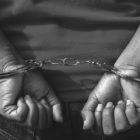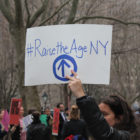
With Cotton Support, JJDPA Reauthorization Seen As Possible This Year
|
Key juvenile justice legislation may be on the brink of reauthorization after years of disagreement and inaction in Congress.
Juvenile Justice Information Exchange (https://jjie.org/author/jjie-org/page/37/)

Key juvenile justice legislation may be on the brink of reauthorization after years of disagreement and inaction in Congress.

Since I was released from prison, I’ve dedicated my life to equipping young leaders with training and tools to fight to end youth incarceration and close youth prisons. Because I’ve lived through it, I know that there is no better way to support my community than by helping end youth incarceration and helping convince our leaders to invest in young people’s futures instead of bars and cells. Many of my fellow leaders in this movement have similar lived experiences.

America’s justice system is reverting to 1960s-style “law-and-order” policies that are exacting a heavy toll on communities of color, especially young people, according to a report released today by a national anti-poverty group.

There is important new evidence that reducing out-of-home placements — while also reducing disparities for racial and ethnic minorities — is an achievable goal for the juvenile justice system. The removal of minors from their home, ostensibly for their rehabilitation, often results in additional difficulties in their schooling, future employment and overall well-being — especially if the placements exceed six months. When a youth is placed out of home, it can also be disruptive and detrimental to the entire family.

Violence perpetrated by youth continues to have far-reaching costs for society: It contributes to injury, community dysfunction, poor physical and mental health, lost economic output and premature death. In the United States, an average of 12 young people die from homicide every day, and homicide remains the third leading cause of death among youth 10 to 24 years old.

Just over two years ago, I was preparing to attend my first FACJJ (Federal Advisory Committee on Juvenile Justice) meeting in Washington, D.C., enthusiastic to be working side-by-side with proven professionals in juvenile justice, individuals throughout the country who had voluntarily adjusted their personal and professional lives to better the lives of the youth we serve.

As juvenile justice reforms take hold in California and youth arrests rates plunge, far fewer youth are being placed into the criminal justice system and prosecuted as adults.

As the first step in New York’s raise the age law, all 16- and 17-year-olds were moved off New York City’s notorious Rikers Island and into more appropriate juvenile facilities by the Monday deadline, according to an announcement by Mayor Bill de Blasio.

We all know that the justice system is broken and that there is so much that we can all do to make it better. For a long time there have been a lot of people trying to reform the justice system because we all know the system is set up to put certain people behind bars.

Very recently, Brenda “Sonny” Baker died of cancer. It was a coup de grace many of us incarcerated women at the State Correctional Institution in Muncy, Pa., did not see coming — in fact, few of us even knew the severity of her illness. Brenda bravely kept the grisly details under wraps so that she could put on a courageous front for the women she was serving time with; sparing herself from what she deemed to be unnecessary pity and attention.